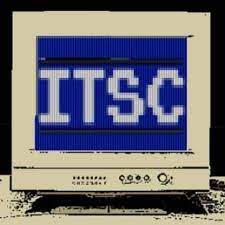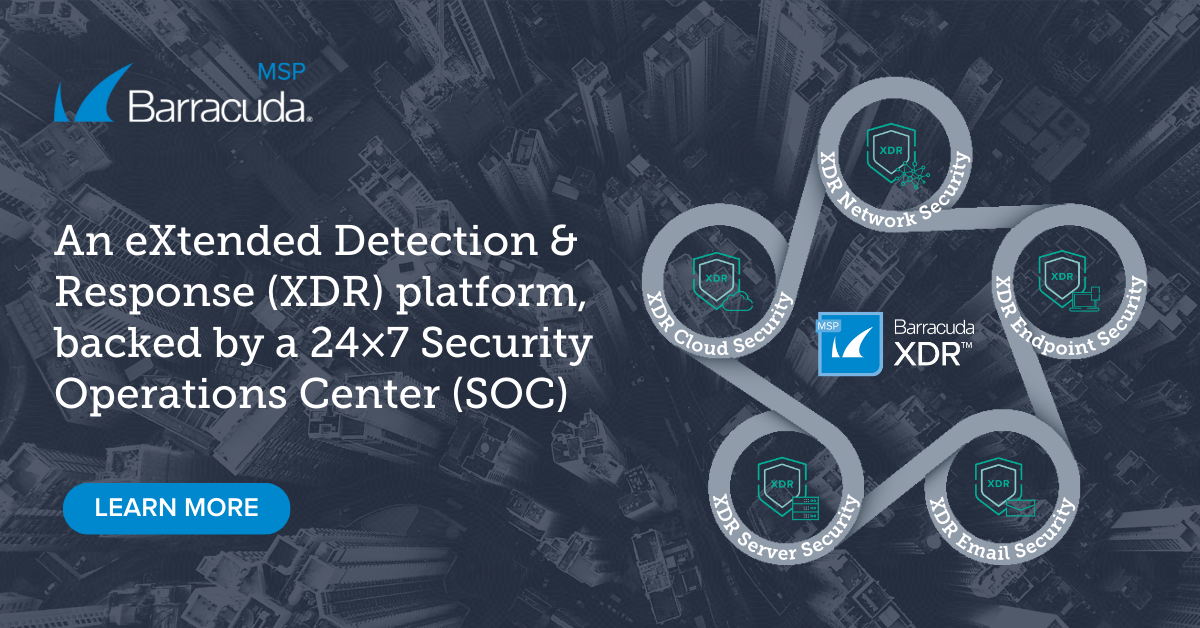
 Keeping up with the latest security terms and acronyms can be nearly as challenging as defending against cyberattacks. In fact, most MSPs are familiar with EDR, MDR, and XDR. However, you must determine which of these security platforms will provide the protection your customers need and your team’s skillset.
Keeping up with the latest security terms and acronyms can be nearly as challenging as defending against cyberattacks. In fact, most MSPs are familiar with EDR, MDR, and XDR. However, you must determine which of these security platforms will provide the protection your customers need and your team’s skillset.
The great EDR, MDR, or XDR question
Ideally, MSPs should complement their cybersecurity hygiene and preventative controls with monitoring tools at the email, network, endpoint, and cloud levels. These detection and response tools should identify with a high degree of certainty when something doesn’t look right. With the right tool in place, MSPs can help customers become more resilient against the evolving cyberthreat landscape. But which detection and response is best and most suitable for your MSP organization? Let’s examine each one.
Endpoint Detection & Response (EDR)
The baseline monitoring and threat detection tool for endpoints, that is any servers or client devices that connect to a computer network. EDR relies on software agents installed on these endpoints to capture telemetry and send it to a centralized repository for analysis. Depending on the solution, many EDR agents perform real-time analysis itself to also identify risks. Some of the key components of an EDR solution include:
- Endpoint monitoring—It collects and aggregates data about the protected system, analyzing it to detect potential threats and sending alerts to security teams.
- Active protection—When an EDR tool detects a threat, many automatically respond by interrupting the attack, isolating it, and containing malware.
- Artificial intelligence—AI enables EDR solutions to analyze large data sets and discover patterns and trends that indicate a potential intrusion or other anomalies.
- Log monitoring—Some EDR solutions analyze the raw log files, such as Windows Event Logs, and make critical findings available to security teams that would otherwise go unnoticed by other EDR solutions.
- Digital forensics—Before an organization can respond to an attack, it needs to know the cause and scope of the problem. Some EDR solutions provide security analysts with the option to investigate and provide audit information.
Managed Detection & Response (MDR)
A managed security service handled by a third party. Gartner defines MDR as a 24/7 threat monitoring, detection, and lightweight response service to customers leveraging a combination of technologies. Depending on the security provider, various technologies can offer greater visibility, detection, and response capabilities. For example, some of the technologies behind an MDR service include:
- Security information and event management (SIEM)—A real-time solution that analyzes the data generated by applications and network hardware.
- Network traffic analysis (NTA)—A method of monitoring network availability and activity to identify anomalies, including security and operational issues.
- Endpoint protection platform (EPP)—EPP solutions are typically cloud-managed solutions deployed on endpoint devices that utilize cloud data to assist in advanced monitoring and remote remediation.
- Intrusion detection system (IDS)—A device or software application that monitors an environment for malicious activity or policy violations.
MDR vendors provide a turnkey service by leveraging a curated stack of security technologies from multiple vendors which is standardized across their customer portfolio. This allows their SOC to take the security reins from their customers and perform response efforts on their behalf. Although the provider and MSP share the reins, responsibility is largely shifted to the MDR provider.
Extended Detection & Response (XDR)
A platform that is also a turnkey, natively offers SIEM and SOAR functionality, and extensively integrates commonly used security tools into a cohesive security operations system for unified prevention, detection, and response. XDR ingests telemetry from various security products to correlate events that would otherwise be difficult to recognize manually and provides its customers with a centralized view of their security posture. XDR customers can choose the path of completely handing over their security reins to an XDR provider or utilizing XDR to enable their internal teams and provide defense-in-depth. Additionally, by integrating with multiple products, XDR gives security professionals the ability to respond to threats efficiently by removing unnecessary context switching.
XDR tools often provide features such as:
- Consolidated threat monitoring—By streamlining security data ingestion, analysis, and workflows across an organization’s entire security stack, XDR enhances visibility around hidden and advanced threats and unifies the response.
- Centralized user interface—XDR integrates security solutions and business applications into a single platform to streamline and reduce management requirements.
- Automated response—Like EDR and MDR, XDR can investigate, isolate, and remediate specific attacks on covered systems.
- AI and machine learning enhancements—Like EDR and MDR, XDR tools typically include AI and machine learning to detect anomalies and initiate specific incident responses.
- Reporting—With the centralized view, XDR can often provide more compelling and holistic reports giving its customers better situational awareness.
- SOC-as-a-Service—24×7 coverage with teams of tenured analysts across the various security verticals. Ability to investigate across various data sources to identify and eliminate false positives and other cumbersome tasks on behalf of the customer.
Which detection and response solution is best for your MSP business?
All three solutions, EDR, MDR, and XDR, have various similarities. Each system collects data and uses it to detect threats. They also provide some form of automated responses based on the input of data and threat intelligence. Yet, there are critical differences between them. For example, EDR is explicitly designed to protect endpoints. For effective cybersecurity, this tool must be combined with additional tools that protect other parts of the network and therefore EDR is not enough for most organizations. While MDR can be scaled to protect various components with different tools, its lack of centralizing the data often makes organizations lacking situational awareness for their overall security posture but a compelling offering for those organizations who want to completely hand the security reins to someone else. For organizations who want complete coverage similar to MDR but with a centralized view, XDR is a better fit.
For most organizations, the correct answer to the EDR vs. MDR vs. XDR question will likely be EDR with XDR. In fact, research from Nemertes has shown organizations that are more successful in cybersecurity are also more likely to integrate EDR with XDR where the XDR is integrated with other security services.
Photo: Gorodenkoff / Shutterstock
This post originally appeared on Smarter MSP.

